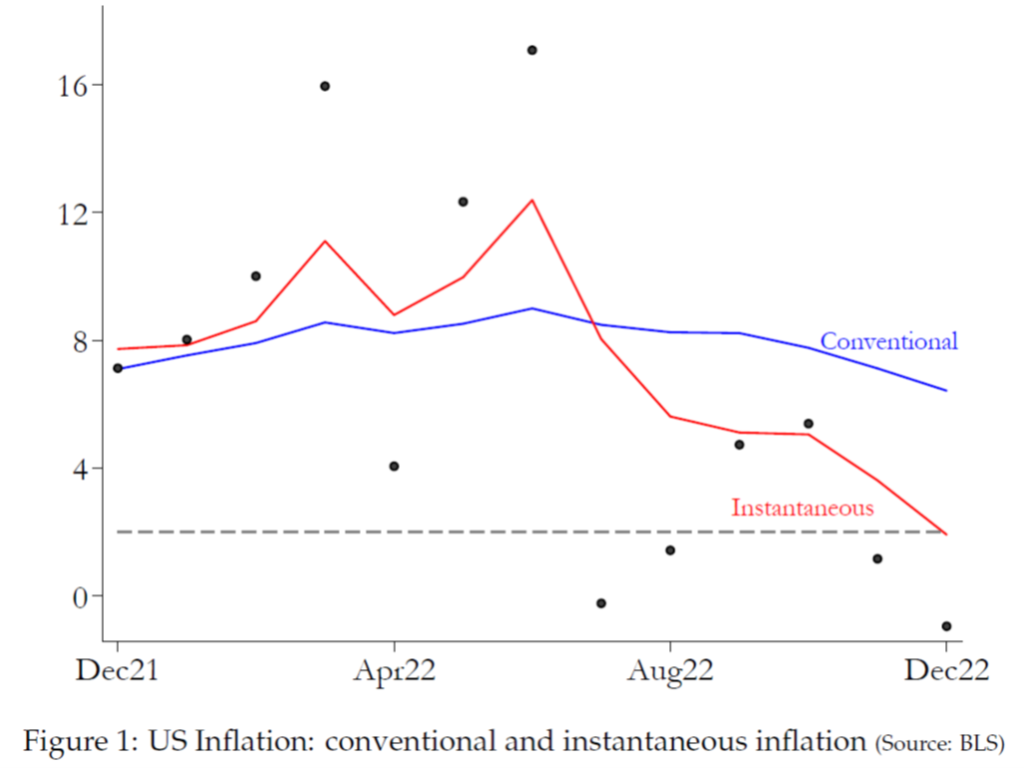Instantaneous Inflation
From a new working paper by Jan Eeckhout (UPF Barcelona), h/t Torsten Slok:
Current practice to measure inflation for monetary policy uses the average annual inflation rate. When inflation changes fast, whether increasing or decreasing, the annual average rate is biased towards data from too far in the past and conveys the true price level with six months delay. I propose to use instantaneous inflation as a more adequate measure of the price change. The measure trades off noise in the data with the precision of the instantaneous price change. Using the latest inflation numbers, it shows that instantaneous inflation in the US and the Eurozone is back to the target of 2% and that the high inflation period is over. This is not so for the UK, Japan and Australia.
Note that this is related to the debate we have had on this blog about the relative merits of 12-month inflation (or some people’s desire to use 17 or 18-month annualized inflation), 3-month, or 1-month. 12-month overweights older data, 1 month is too noisy. The figure below shows the conventional 12-month (blue), and one-month (or month-on-month) as black circles.

Using a polynomial kernel with weight a=4 (the conventional measure is 0, i.e., equal weighting to each monthly inflation rate), the author obtains the red line, which he terms “instantaneous inflation”. (See Figure B1.a in the paper for a graph showing how more recent observations are more weighted than older, relative to the simple 12-month change, a=0).
The author notes:
I find that the smoothed inflation in December 2022 is at 2%, the inflation target (see Figure 1, where a = 0 corresponds to the traditional measure and a = 4 corresponds to the instantaneous inflation measure with bandwidth parameter 4… The traditional [year-on-year] measure of inflation in December instead is 6.5%.
More By This Author:
Why Friends Don’t Let Friends Calculate 18 Month Not-Seasonally Adjusted Growth Rates
A Graphic Exposition On Seasonality In Key Macro Indicators
"Beneath The Stock Market's Surface ... "
Disclosure: None.



